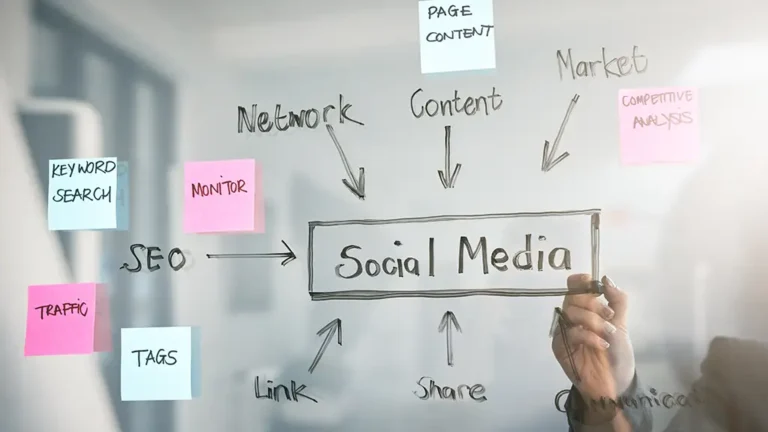The Truth About Organic Reach in 2025: Is Paid Advertising the Only Way?
The world of social media marketing has undergone dramatic changes over the years, and 2025 is no exception. Organic reach, once a cornerstone of successful social media strategies, has become increasingly elusive for brands and creators. Social media platforms have evolved to prioritize paid content, creating a more challenging environment for those relying solely on organic methods to connect with their audience.
As algorithms continue to favor content that generates revenue for the platforms, many marketers are questioning whether organic reach is still a viable strategy. While paid advertising has become an essential tool for amplifying visibility, dismissing organic reach altogether overlooks its potential value when executed effectively. Organic content fosters authenticity, builds trust, and provides a foundation for long-term engagement that paid ads alone cannot replicate.
For brands seeking to navigate this evolving landscape, balancing organic and paid strategies is crucial. A tailored approach, guided by experts in social media agency services, can help maximize both reach and impact by leveraging the strengths of each method.
Why Organic Reach Has Declined
The decline of organic reach is a result of several factors, with increased competition at the forefront. Social media platforms are more crowded than ever, with millions of users posting daily. This sheer volume of content means that even high-quality posts can struggle to gain traction in an oversaturated market.
Another driving force behind the decline is the monetization strategies of social media platforms. Platforms like Facebook and Instagram rely heavily on ad revenue, and their algorithms are designed to prioritize paid content over organic posts. While this shift benefits platforms financially, it creates significant challenges for brands aiming to build visibility without a substantial advertising budget.
Algorithm changes have also played a key role. Social media algorithms are increasingly complex, prioritizing content based on factors like engagement, relevance, and user behavior. While this ensures users see more personalized content, it also makes it harder for brands to achieve organic visibility unless their posts generate immediate and significant interaction.
Despite these challenges, organic reach isn’t entirely obsolete. By understanding the reasons behind its decline and adapting strategies accordingly, brands can still find opportunities to connect with their audience in meaningful ways.
The Role of Algorithms in Organic Reach
Algorithms are the gatekeepers of organic reach, dictating what content users see and how often they see it. Platforms like TikTok, Instagram, and LinkedIn use algorithms to deliver personalized feeds, ensuring that users are served content they’re most likely to engage with. For brands, this means that simply posting isn’t enough—content must align with algorithmic priorities to stand a chance of being seen.
Engagement is one of the most critical factors algorithms consider. Posts that quickly generate likes, comments, shares, or saves are more likely to be boosted and shown to a broader audience. This creates a feedback loop where highly engaging content gains visibility, while less interactive posts are pushed further down in users’ feeds.
Relevance is another important factor. Algorithms prioritize content that aligns with a user’s interests, based on their past interactions and preferences. For brands, understanding their audience and tailoring content to meet their specific needs is key to improving organic reach. This might involve using trending hashtags, participating in viral challenges, or creating educational posts that resonate with their target demographic.
Timing also matters. Posting when your audience is most active increases the likelihood of immediate engagement, which can signal to the algorithm that your content is worth promoting. Tools like analytics dashboards and scheduling software can help brands identify optimal posting times.
While algorithms pose challenges, they also present opportunities for brands willing to adapt. By focusing on engagement, relevance, and timing, businesses can work with the algorithm rather than against it, optimizing their chances of reaching a wider audience organically.
The Platforms Where Organic Reach Still Thrives
While organic reach has declined on many major platforms, there are still spaces where it remains a powerful tool for brands. Platforms like TikTok, LinkedIn, and newer entrants like BeReal have shown strong potential for organic growth by prioritizing authentic, community-driven content over paid promotion.
TikTok is perhaps the most prominent example of a platform where organic reach thrives. Its algorithm is designed to surface engaging and relevant content, regardless of the creator’s follower count. This makes TikTok an ideal space for brands to reach new audiences through creative, trend-driven videos that resonate with its highly active user base. Brands that focus on storytelling, humor, and authenticity often find significant organic success on this platform.
LinkedIn offers another opportunity, particularly for B2B brands and thought leaders. The platform prioritizes professional connections and meaningful conversations, allowing users to amplify their reach through engaging posts and articles. By sharing insights, industry news, or personal success stories, brands can foster organic growth while building authority in their niche.
Emerging platforms like BeReal are also worth exploring. BeReal emphasizes unfiltered, genuine content, creating a space where users—and by extension, brands—can connect in a more authentic way. While BeReal is still in its early stages as a marketing tool, its focus on raw and relatable content aligns perfectly with trends in organic social media.
For brands willing to experiment and tailor their strategies to the strengths of each platform, organic reach remains a viable way to build audience connections and drive engagement.
Strategies for Boosting Organic Reach in 2025
Maximizing organic reach in today’s social media landscape requires a combination of creativity, strategy, and consistency. Creating engaging, high-quality content is the foundation of any successful organic strategy. Posts that evoke emotion, tell a story, or provide value are more likely to resonate with audiences and encourage sharing, which amplifies reach.
Leveraging trends is another effective way to boost organic visibility. Participating in viral challenges, using trending audio, or joining popular conversations can help brands align with the cultural zeitgeist. For example, a fashion brand might create a Reel showcasing outfits styled to a trending song, tapping into existing engagement around that audio.
Hashtags remain a powerful tool for discoverability, especially on platforms like Instagram and TikTok. By researching and using relevant hashtags, brands can increase the chances of their content appearing in searches or on explore pages. Combining niche hashtags with broader ones ensures content reaches both targeted and wider audiences.
User-generated content (UGC) is another effective strategy for driving organic reach. Encouraging customers to share their experiences with your brand not only builds trust but also creates shareable content that expands your audience. A beauty brand, for example, could run a campaign inviting users to post photos of their favorite looks using the brand’s products, rewarding participation with a chance to be featured.
Consistency is key to sustaining organic reach. Posting regularly and maintaining a cohesive brand voice helps keep your audience engaged and ensures your content remains top-of-mind. A consistent posting schedule signals to platforms that your account is active and reliable, which can positively impact algorithmic favorability.
By combining these strategies, brands can make the most of organic opportunities, even in a challenging environment.
The Rise of Community-Centric Marketing
As organic reach becomes more challenging, brands are increasingly turning to community-centric marketing to amplify their visibility and engagement. Building a loyal, engaged community allows brands to create a network of advocates who share their content organically, driving reach without relying on paid promotion.
Community-centric marketing focuses on creating spaces where audiences can connect with both the brand and each other. Platforms like Discord, Facebook Groups, or Reddit are ideal for fostering these interactions. For example, a gaming company might launch a Discord server where fans can discuss upcoming releases, share tips, and participate in exclusive events. These spaces build loyalty and encourage organic word-of-mouth marketing.
Engaging with your audience directly is also crucial. Responding to comments, participating in discussions, and acknowledging user contributions foster a sense of belonging. Interactive content, such as polls, Q&A sessions, and live streams, provides additional opportunities for two-way communication, making audiences feel valued and involved.
Brands can also use community-focused campaigns to amplify their message. For instance, inviting users to co-create content, participate in challenges, or contribute to branded hashtags encourages organic sharing. A fitness brand might launch a campaign asking followers to share their workout progress using a specific hashtag, creating a wave of user-generated content that extends the campaign’s reach.
By prioritizing community-building, brands can create a network of loyal supporters who actively amplify their content. This approach not only strengthens relationships but also ensures sustainable organic growth in a competitive digital landscape.
Combining Organic and Paid Efforts
In 2025, a hybrid strategy that combines organic reach with paid advertising is essential for maximizing impact. While organic reach fosters authenticity and long-term audience engagement, paid advertising provides the scale and precision necessary to reach broader audiences and achieve immediate results. By blending these approaches, brands can create a well-rounded social media marketing strategy that leverages the strengths of both methods.
Organic content serves as the foundation for trust and loyalty. Consistently posting valuable, engaging content allows brands to build relationships with their audience and create a community around their message. Paid efforts can then amplify this organic content, ensuring it reaches users who might not otherwise discover it. For example, a small business could create a series of helpful tutorials as organic posts, then use paid promotion to push the most popular video to a wider audience.
Paid advertising also supports organic growth by driving traffic to a brand’s profile. When users discover a brand through a paid ad, they often explore its organic content to learn more. If the organic content is compelling, they’re more likely to follow the brand and engage with future posts, creating a cycle of growth.
The key to combining organic and paid efforts effectively is alignment. Ensure your paid campaigns align with the tone, style, and messaging of your organic content to create a seamless experience for your audience. This integrated approach maximizes ROI and strengthens your brand’s presence across platforms.
The Cost of Relying Solely on Paid Advertising
While paid advertising offers undeniable benefits, relying solely on it comes with significant risks and limitations. One of the most immediate concerns is cost. Paid ads require ongoing investment, and without a clear strategy or measurable results, campaigns can quickly become expensive without delivering meaningful returns.
Over-reliance on paid advertising can also impact audience perception. Gen Z and Millennials, in particular, value authenticity and are often wary of brands that rely too heavily on polished, promotional content. Excessive ads can feel intrusive or inauthentic, leading to disengagement or even negative associations with your brand.
Another limitation of paid advertising is its lack of long-term sustainability. Ads generate immediate visibility, but once the campaign ends, so does the reach. Organic content, on the other hand, continues to deliver value over time, as it can be discovered and shared long after it’s posted. A brand that neglects its organic strategy risks losing the foundation needed to maintain audience loyalty and engagement.
To mitigate these risks, brands should treat paid advertising as a tool to enhance their organic efforts, not replace them. A balanced approach ensures that paid campaigns drive results without sacrificing authenticity or long-term growth.
Measuring Success Beyond Reach
In the evolving landscape of social media marketing, focusing solely on reach is no longer enough. While reach remains an important metric, it doesn’t provide the full picture of how your content is resonating with your audience or driving business outcomes. Brands need to look beyond reach to measure meaningful success through engagement, retention, and conversions.
Engagement metrics such as likes, comments, shares, and saves offer valuable insights into how well your content is connecting with your audience. High engagement rates indicate that your posts are resonating, while low engagement suggests the need for adjustments in strategy or messaging.
Retention metrics, such as follower growth and audience loyalty, help gauge the strength of your brand’s relationship with its community. Monitoring how many followers actively engage with your content over time provides a clearer picture of audience commitment than reach alone.
Conversions—whether they involve website visits, sign-ups, or purchases—are the ultimate measure of how your social media efforts contribute to business goals. Tracking these metrics ensures that your strategy drives tangible results, not just visibility.
By focusing on these deeper metrics, brands can better understand the true impact of their social media efforts and refine their strategies for sustained success.
Conclusion: Is Paid Advertising the Only Way?
The answer to whether paid advertising is the only way forward is a resounding no. While paid ads are a powerful tool for scaling visibility and driving immediate results, organic strategies remain essential for building trust, fostering engagement, and ensuring long-term success.
In 2025, the key to thriving in a competitive social media landscape is balance. Combining organic content with paid promotion allows brands to leverage the best of both worlds: the authenticity and loyalty fostered by organic efforts and the precision and scalability offered by paid campaigns.
Future-proofing your strategy requires adaptability and innovation. As platforms evolve, so too should your approach to social media marketing. Embrace trends, experiment with new formats, and focus on building a community around your brand. By staying agile and maintaining a balance between organic and paid efforts, you can navigate the challenges of declining organic reach while maximizing the opportunities that social media continues to offer.







